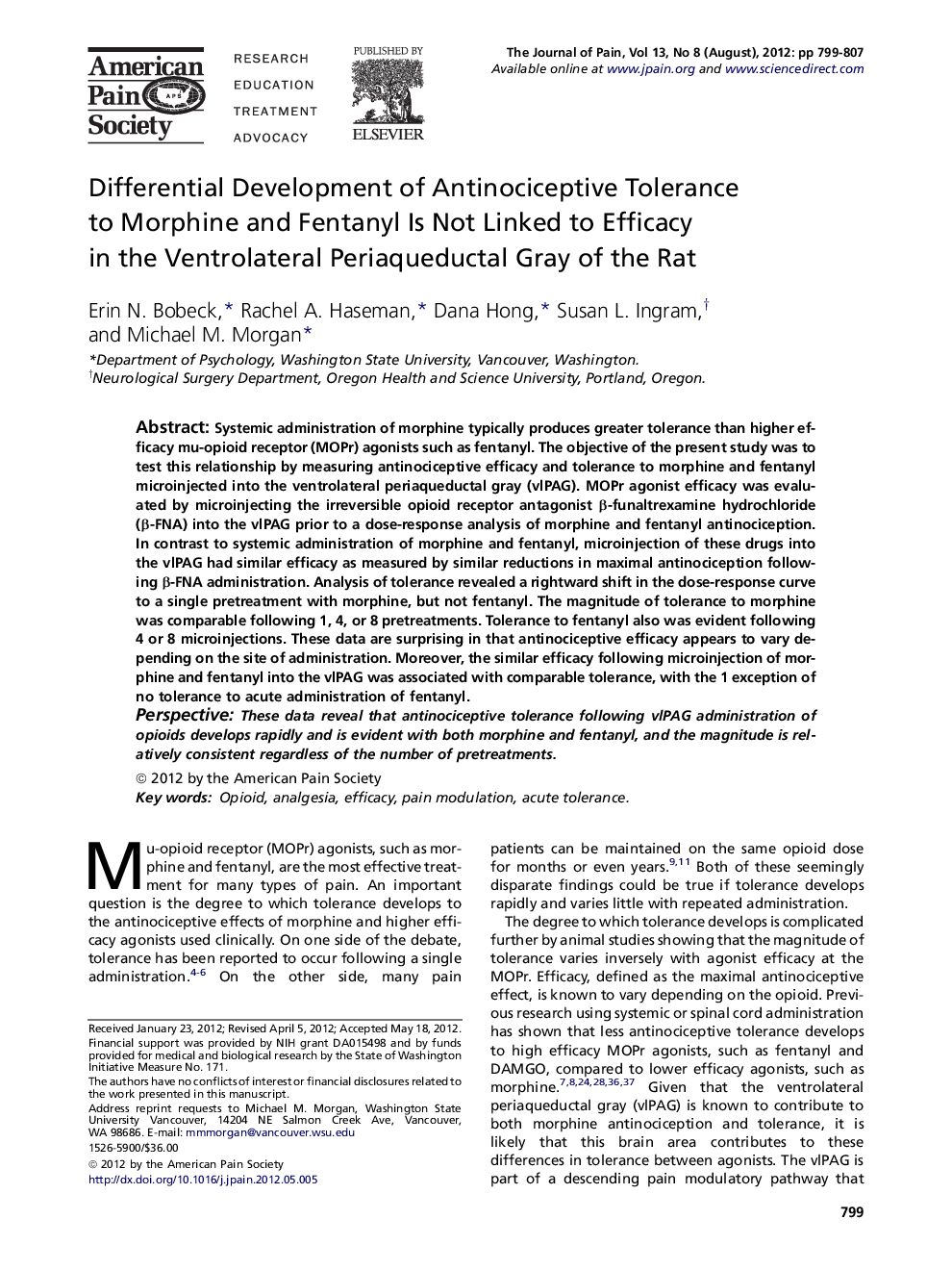| Article ID | Journal | Published Year | Pages | File Type |
|---|---|---|---|---|
| 2728841 | The Journal of Pain | 2012 | 9 Pages |
Systemic administration of morphine typically produces greater tolerance than higher efficacy mu-opioid receptor (MOPr) agonists such as fentanyl. The objective of the present study was to test this relationship by measuring antinociceptive efficacy and tolerance to morphine and fentanyl microinjected into the ventrolateral periaqueductal gray (vlPAG). MOPr agonist efficacy was evaluated by microinjecting the irreversible opioid receptor antagonist β-funaltrexamine hydrochloride (β-FNA) into the vlPAG prior to a dose-response analysis of morphine and fentanyl antinociception. In contrast to systemic administration of morphine and fentanyl, microinjection of these drugs into the vlPAG had similar efficacy as measured by similar reductions in maximal antinociception following β-FNA administration. Analysis of tolerance revealed a rightward shift in the dose-response curve to a single pretreatment with morphine, but not fentanyl. The magnitude of tolerance to morphine was comparable following 1, 4, or 8 pretreatments. Tolerance to fentanyl also was evident following 4 or 8 microinjections. These data are surprising in that antinociceptive efficacy appears to vary depending on the site of administration. Moreover, the similar efficacy following microinjection of morphine and fentanyl into the vlPAG was associated with comparable tolerance, with the 1 exception of no tolerance to acute administration of fentanyl.PerspectiveThese data reveal that antinociceptive tolerance following vlPAG administration of opioids develops rapidly and is evident with both morphine and fentanyl, and the magnitude is relatively consistent regardless of the number of pretreatments.
